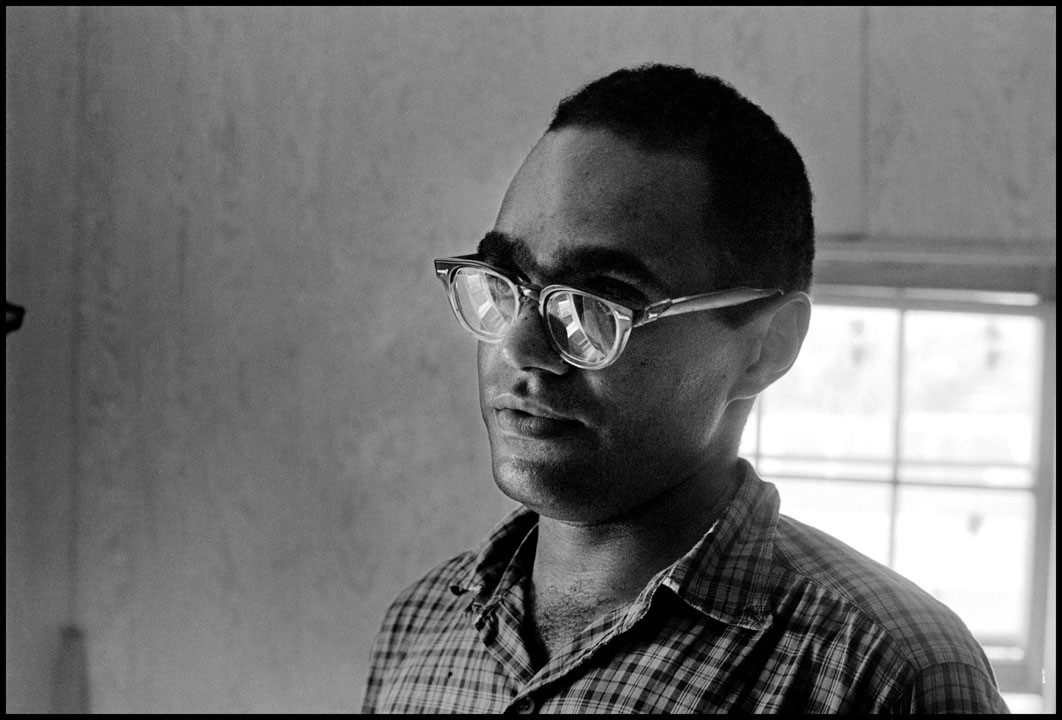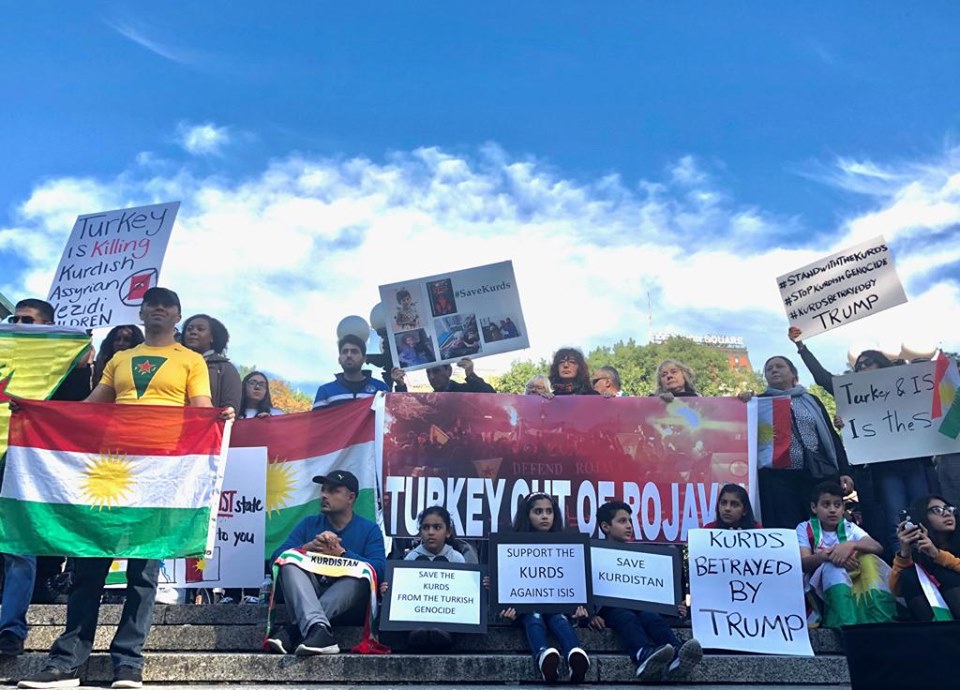First published this essay—a transcript of a talk on 9/11 and American intellectuals that Marcus gave at a synagogue in California—in the spring of 2002. Marcus wasn’t in First’s corner in the magazine’s early years. (He was put off by the harsh review in our second issue of his book on The Basement Tapes.) But Charles O’Brien’s rage at the “Vichy Left” in his post-9/11 essay “The War” spoke to Marcus. He bows to O’Brien’s polemic in “Nothing New Under the Sun” (and takes in a post-9/11 point made by First‘s Fredric Smoler as well), yet his own piece isn’t delimited by 9/11’s aftermath. It’s a kind of case statement for anyone who wants to know what distinguishes intellectuals from typical academics, hacks or other purveyors of the given. There’s been a link to “Nothing New Under the Sun” on the right column of First‘s homepage for years. It won’t be coming down any time soon. B.D.
Terror & Humanism
After the Fall
First’s original editors, longtime New Yorkers, were fully alive to experiences of love and death on 9/11. We printed a set of responses to the attacks that implicitly contradicted those who assumed “anti-Americanism is a necessity” (without imposing a patriotic litmus test). Our post-9/11 issue featured red, white and blue colors above the fold, though that wasn’t a simple flag-waving gesture. The exemplary citizens (and New Yorkers) invoked on our cover were Latin Americans and an Afro-American: La Lupe, Eddie Palmieri and Jay-Z.
I’m reminded of how our colors seemed out of time to the all-knowing Left when I listen to commentary by pundits like Mehdi Hasan who link the post-9/11 “War on Terror” with l/6. That tendentious timeline all but erases the threat once posed by radical Islamists. It assumes American Islamophobia/xenophobia was always a scarier thing than Islamofascism. (I wonder if Mehdi Hasan noticed what happened to Samuel Paty—the French middle school teacher who was decapitated last October after he dared to teach his students about the Charlie Hebdo murders.) While it’s probably true the threat to Americans and Europeans from Islamist terrorists has diminished in recent years, that’s due largely to those Kurdish fighters who turned the tide against ISIS at the battle of Kobani. Future historians may come to see the Kurds’ victory there in January 2015 as the true culmination of the war that blew up in America on 9/11. The Kurds certainly grasped the meaning of their victory: “The battle for Kobani was not only a fight between the YPG and Daesh [ISIS], it was a battle between humanity and barbarity, a battle between freedom and tyranny, it was a battle between all human values and the enemies of humanity.” The clarity of these (mainly Muslim) soldiers who beat an international army of Islamists underscores the not-knowingness of Mehdi Hasan et al.
The following set of posts—by Donna Gaines, George Held, Hans Koning, Wendy Oxenhorn, Fredric Smoler, Laurie Stone, Kurt Vonnegut, and Peter Lamborn Wilson—mixes pieces from First‘s back pages with writing by authors who published their first thoughts on 9/11 in other places. B.D.
Putting Women First
The first photograph I remembered showing the Taliban at work actually dated to the Soviet occupation. It showed a victim of the mujahedin, a woman in a burqa lying on the ground with a caption explaining that she had been shot to death for teaching girls to read. I think my mistake came from later reading about such killings by the Taliban. One of the more horrific newspaper anecdotes I can remember about the Taliban was very recently repeated, probably in either the Times or the Washington Post, by a reporter apparently once as startled by it as I was—it related Taliban amputating the finger tip of a woman who’d applied nail polish. The most memorable internet-viewable home video showed a middle-aged man identified as a member of the Taliban morals police repeatedly beating a woman in a burqa with a leather paddle, the woman screaming, and her screams translated in the subtitles as something like “Just kill me”. The relatively frequent news stories about the forced marriage of quite young girls to Taliban fighters were much more common, also arguably worse, so it is presumably the rarity of the video, perhaps surreptitiously recorded on an early smart phone, that made it stick in my mind.
Bridges to Misogynists
A graph in a recent Times op-ed by an apologist for China’s rulers summed up their party-line takeaway from an American defeat:
Afghanistan has long been considered a graveyard for conquerors — Alexander the Great, the British Empire, the Soviet Union and now the United States. Now China enters — armed not with bombs but construction blueprints, and a chance to prove the curse can be broken.
Bob Moses in Mississippi, 1962

More from Danny Lyon at bleak beauty blog and dannylyonphotos@instagram.
Click “Read more” to see a bigger image.
The Riderless Horse (Letter from Port au Prince)

The year was 1963. The name of the horse was Black Jack.
Even for a 10 year old, it was both moving and troubling to see the horse with no rider following the coffin of President John Kennedy–with a spirited strut, yet not easily controlled.
The horse with the empty saddle is an ancient symbol of poignant absence.
The horse without a master, the nation without a leader, the body without a soul.
We are living the painful and dangerous days after the brutal killing of Haitian President Jovenel Moise. The horse has no rider, and does not know where to turn.
Notes from the Underground
The author–a columnist at Inside Higher Ed–thought this piece belonged in First in the Month. Your editor was glad to take him up on his proposal to reprint it…
In the sort of coincidence that makes a columnist’s work much easier, the Library of America published Richard Wright’s The Man Who Lived Underground: A Novel on April 20 — the same day, as it turned out, that a jury in Minneapolis convicted a police officer of murdering George Floyd last year.
It’s Tricky: Thinking Through “Dear Comrades”
When Putin was re-elected in 2018, Andrei Konchalovsky, director of Dear Comrades—the acclaimed historical drama about an atrocity erased from history during the Soviet era—spoke on RT of his “extraordinary joy” (though he sounded dutiful rather than giddy). Putin’s win, per Konchalovsky, was proof Russia was “going the right way.” I didn’t see his election spin on RT until after I’d watched Dear Comrades so it was a shock to hear him express disdain for the “fuss” made by Putin’s “paranoiac” critics since his film about the 1962 Novocherkassk massacre limns what happens in a country where no-one’s allowed to disturb powers-that-be.
Reasons to be Fearful: A Response to Fredric Smoler
I very much appreciate Mr. Smoler’s arguments in “They Are Not Us: More Thoughts on German Resistance to Nazism,” his well-considered response to my interview with filmmaker Hava Beller. I would like to clarify a few points.
Michelet on the Bastille
Excerpted from Jules Michelet’s History of the French Revolution, translated by Charles Cocks.
A World Without Borders
I just wanna feel myself, you want me to kill myself
Quintessential Mesopotamian Protests
My old friend Charlie Keil emailed me–“See why you like Kanan Makiya. Love those lions.”–after he read Makiya’s recent piece in the Kenyon Review, “The Dying Lion.”
The Groveland Four’s Story Bends Toward Justice
Last week, Florida’s governor, Republican Ron DeSantis, accepted the unanimous recommendation of the state’s clemency board and issued pardons to the “Groveland Boys”—four African Americans—Earnest Thomas, Charles Greenlee, Samuel Shepherd and Walter Irvin—who were wrongly accused of raping a white women seventy years ago. Back then, they became victims of Jim Crow injustice and, in particular, of a Southern sheriff, Willis McCall, who made “Bull Connor look like Barney Fife.” To quote Gilbert King who uncovered quashed evidence collected by the FBI of McCall’s crimes against the Groveland Four, including the extra-judicial killing of Samuel Shepherd and attempted murder of Walter Irwin. King’s book, Devil in the Grove: Thurgood Marshall, the Groveland Boys, and the Dawn of a New America (2012) informed a citizens’ movement that pressed Florida’s officials to act.
